“Before 18th May 1810, Argentina, Bolivia, Paraguay and Uruguay were all part of the Viceroyalty of the Río de la Plata, a Spanish colony.
At that time Joseph Bonaparte, brother of Napoleon, was king of Spain. However, he was opposed by the Spanish Supreme Central Junta, a committee of local governments, which resisted him and became a temporary government. The French retaliated and conflict ensued in various parts of Spain.
On the 18th May, British ships arrived in Montevideo, Uruguay, bringing with them news of the precarious state of the Spanish government. A variety of criollo officials met in Buenos Aires on 22nd May 1810 to decide the future of the viceroyalty in light of this news.
They decided that the viceroy, Baltasar Hidalgo de Cisneros, had to step down as Spain was no longer independent and the Spanish government was not the same government that appointed him.
The Primera Junta (First assembly) then stepped in as a provisional government for the provinces of Río de la Plata, to rule in the absence of a king. Cisneros was initially appointed president of the Primera Junta, but eventually resigned as many were discontented with the choice to appoint him.
Following several days of debate, Cornelio Saavedra became the president and the Primera Junta presented itself as the official government on 25th May 1810. This marked the beginning of independence in Argentina.”
– Amie Tsang, The Argentine Independent, Bicentenary: The May Revolution
My “Paint by Numbers” walking tour project has lain dormant for many moons now. In many ways a less interesting way to explore the city than my series following the various leaders of the country – there’s not necessarily as much interesting history for some of the dates – though, 25 de Mayo, the start of Argentina’s independence revolution is certainly up there. As befits such an important date, the street bearing the same name is located in the heart of the city, connecting the Casa Rosada to the primary transit hub for the city in Retiro, within a block or two of the Mitre train station, the Terminal de Omnibus, and the port.
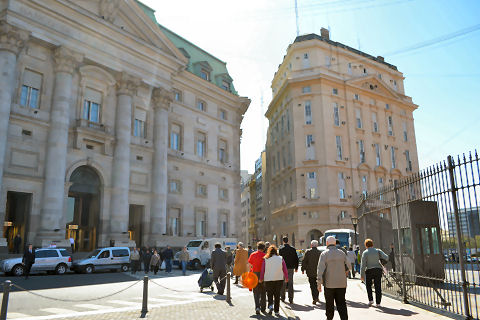
The street begins at the juncture of some of the more important powers in the State. To the right inside the fence, the Casa Rosada, the presidential palace. In the center, the narrow building, the headquarters of SIDE (a sort of local equivalent mashup of the NSA, CIA, and Secret Service), and to the left, what is currently the headquarters for Banco Francés, originally the Nuevo Banco Italiano.
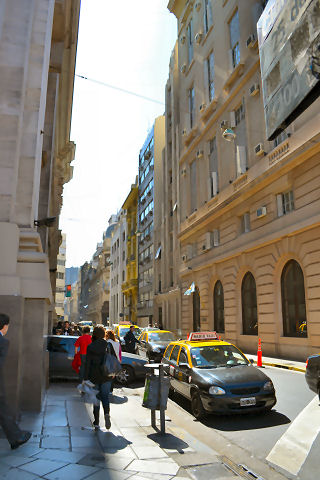
The street is a fairly narrow one, which unfortunately means that many of the photos are going to be at weird angles just to try to get in as much as I could. From the side of the bank, this is a look down the lane, at this end mostly quite beautiful buildings dating from anywhere between the late 1800s into the 1940s.
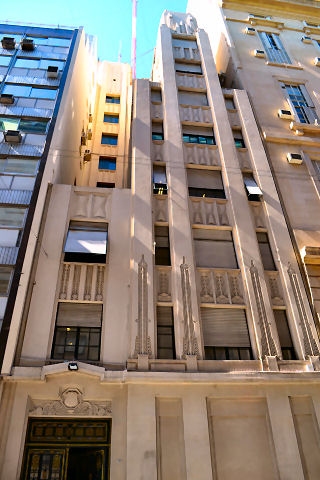
At #33 is this art deco style building dating from 1931. It is an annex office building for SIDE, as well as, if one needs any other evidence of the tight governmental control on the national airline, the main offices for Aerolineas Argentina.
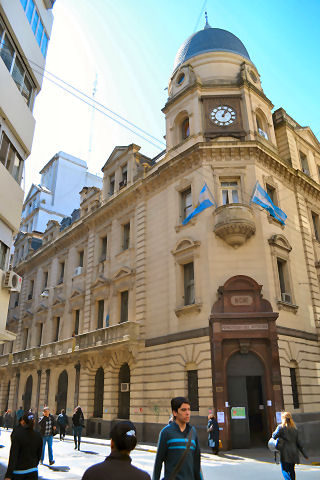
At the first corner, Mitre, the Ministerio del Interior is located in this attractive yet “severe” style Academic building at #101. Designed and built in 1901 by Scottish architects Eustace and Roger Condor, it was originally part of the headquarters for the national railroad company, which stretched on down the block encompassing several buildings.
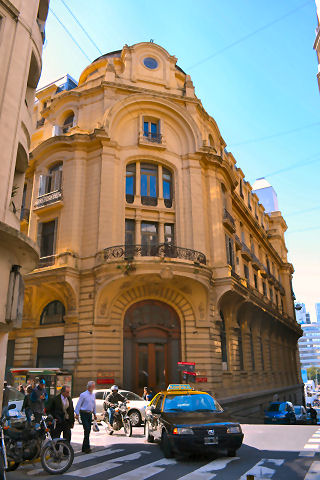
Although the main campus of UBA’s Facultad de Filosofia y Letras is located out in Caballito, this class building at #221, corner of Perón, was opened in 1968. The building has quite a history, originally built in 1904 to be BA’s most luxurious hotel, The Palace, and also the main office for the owner of the building, Nicolás Mihanovich, a Croatian shipping magnate. In 1912 he moved his offices, turning the entire space over to the hotel, but also let the management of the hotel slide and it gradually declined in importance, finally closing in 1930 during the Depression. In 1932 the building was occupied by BHN, the national mortgage bank offices, as an annex to their neighboring headquarters. The building passed into the hands of the State in the 1950s and was used for various government purposes. In 1965 it was turned over to the University of Buenos Aires and became the School of Architecture and Urban Planning, though a mere three years later was converted to the School of Philosophy and Letters which it remains to this day. The building also houses the Paco Urondo Cultural Center and a dining hall shared by students from various UBA classroom buildings in the area.
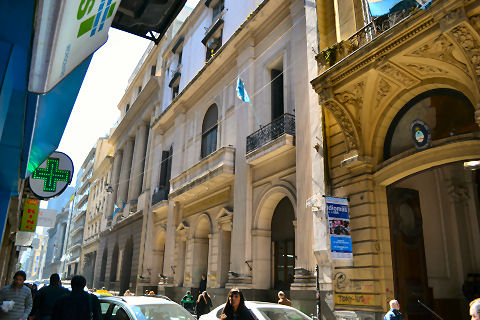
Just down the block at 245 is the Cámara Nacional Electoral, a branch of the judicial system that is charged with the responsibility of monitoring and certifying all elections in the country, as well as maintaining the registry of all citizens who are eligible to vote. The building itself is the one mentioned in the last paragraph, originally the headquarters of the BHN – the national mortgage bank – designed and built in 1888 by architect Carlos Altgelt. The facades on both sides are quite different, facing 25 de Mayo is this “Bourbon” style and the Av. Alem side is Gothic, and if I understand correctly, were either jointly designed by, or perhaps later on redesigned by Italian architect Pablo Scolpini. In 1997 the bank was privatized and as the building belonged to the State, they moved their offices, and the building became an annex office for the tax authority, AFIP, and then later to its present day use.
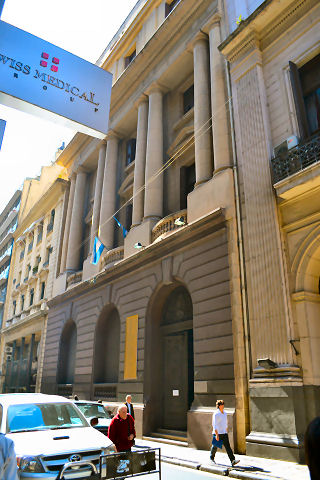
Just a few doors down at 263 (and again, a building that goes through to Av. Alem), is the Archivo General de la Nación, yet another Academic style building that was originally built for BHN’s usage when they outgrew their two neighboring buildings, between 1914 and 1920. In 1950 the bank stopped using this particular building and the transfer of the Archives from its then location in San Telmo began. The building has been renovated several times and was briefly used as a newspaper office during the early 80s. There is an exposition center in the building that is open to the public where you can view a display of some of the most important documents of Argentine history.
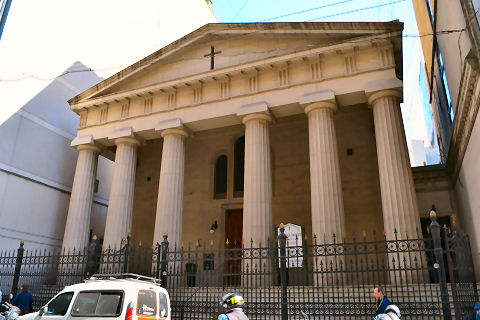
At 282 is the oldest Anglican church in South America, the Catedral de San Juan Bautista, built in 1831 in a neo-classical style – the building is considered a national monument. The site where it stands was originally the Our Lady of Mercy cemetery (the Basilica Nuestra Señora de la Merced is located a block away at Reconquista 207), which must have caused a bit of inter-religious stir when it was built. Then again, the entire area was obviously built over with office and government buildings, so presumably the cemetery was relocated in advance of downtown construction. The day, or at least hour, I did this walk the cathedral wasn’t open so I didn’t visit the inside, I understand that there are some pretty stunning stained glass windows, including a trio that were donated in memory of the family of Admiral William Brown and apparently depict family members (including two granddaughters lost in the yellow fever epidemic in the 1870s) in settings with either Jesus or Mary. I know that there are regular concert series held at the cathedral, open to the publich. Unfortunately the history page of the cathedral’s website is currently “under construction” and I didn’t find much more online – perhaps my friends and regular readers George and Al can help out here?
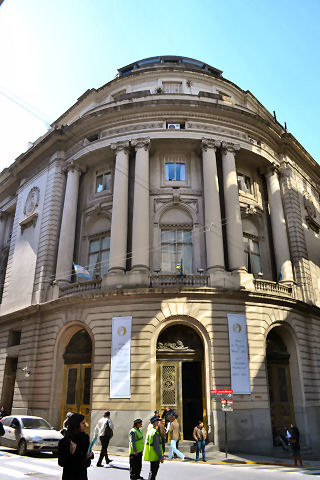
At the corner of Sarmiento is the Bolsa de Comercio, currently celebrating its 157th year. While the Stock Exchange was created in 1854, it was originally located in one of the family houses of José San Martín, at what is now San Martín 118, and then in 1862 moved to a home of Bartolome Mitre, at 216 on the same street – now the Numismatic Museum of the Central Bank. In 1885 it was moved into a building on Plaza de Mayo (since then demolished in 1940 and rebuilt as the current Banco Nación). In 1913, architect Alexander Christophersen designed the new building here on 25 de Mayo – the building was opened in 1916 and has been the home of the Stock Exchange ever since. It was renovated in 1971, and there’s a nice little virtual tour on the exchange’s website, here. They also have an exhibition hall in the building with free concerts, gallery shows and lectures to the public (schedule on the main page of the website).
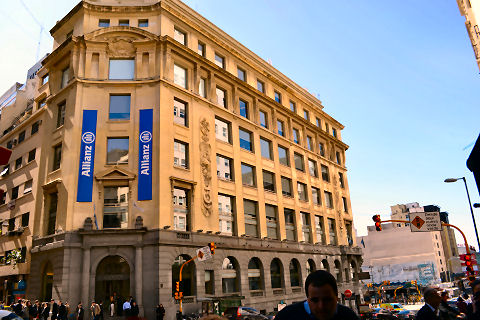
At the corner of Corrientes, officially addressed along that at avenue at #299, this 1923 building, originally known as the Dreyfus Building, was built to house the agriculture company Louis Dreyfus & Cie., which remained there until 2005. The detail work along the side is a design that incorporates an anchor, lifesaving ring, fruits, vegetables, grains, and a pair of wings, was meant to invoke not just the company’s main business but it’s method of transport throughout the country. In 2005 the building was acquired by a local property manager who began a two year restoration project that was not completed – it then sat more or less vacant until this year when it was bought by Allianz as their Argentine headquarters, to the tune of $17 million, plus a $5 million renovation before moving in.
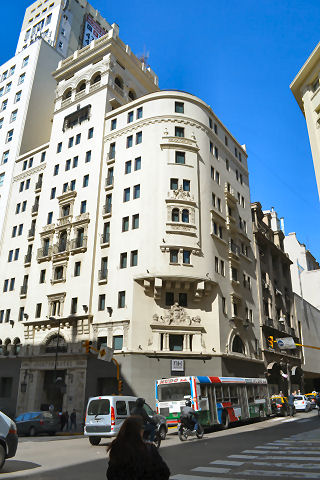
On another corner at Corrientes is the building that was originally the Hotel Jousten, designed in 1925 and opened in 1927. The style is referred to as plateresque, or the style of the silversmith, a peculiarly Spanish architectural style that brings in elements of gothic, renaissance, Tuscan, and other design elements. The hotel included a quite famous, or perhaps infamous, restaurant, La Faisón (The Pheasant) where leaders of the military coup of June 4, 1943 (referred to as the “43 Revolution”) apparently plotted the overthrow of president Ramón Castillo, and which led to the original election of Juan Perón in 1946. The building gradually deteriorated, and in 1998 was bought by the Spanish hotel chain, NH, who completely renovated it, changing much of the facade (the only plataresque elements that really remain surround the entrance – with quite intricate detail, and two soldiers in relief flanking the stairway). The local architects’ society has named it one of the best “recycling projects” of a historic building in the downtown area.
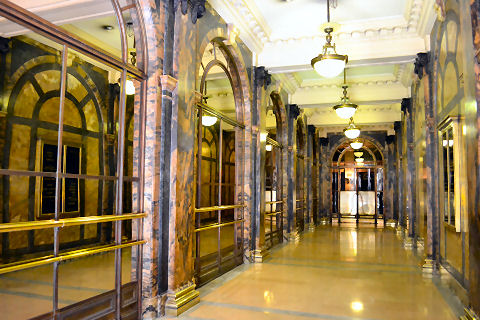
While the Edificio Houlder at 489, corner of Lavalle, formerly home of Banco Medefin and now an office building, is not particularly interesting on the outside, it’s entry hallway is quite attractive. Tenants include lawyers, a private jet charter service, and Tapiz winery’s offices.
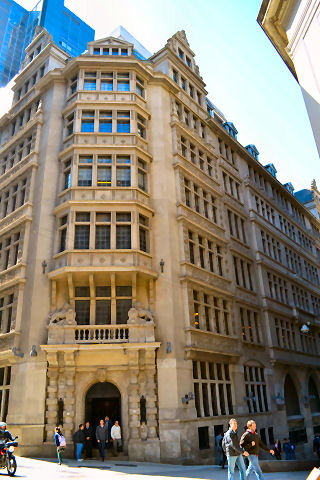
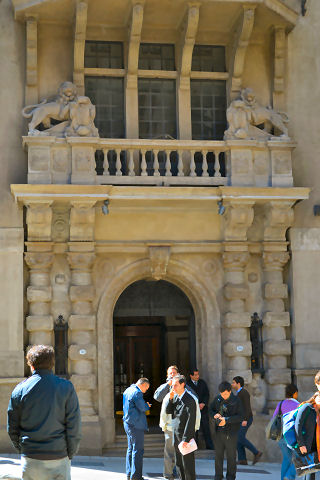
The impressive 1926 Flemish Gothic building at 501 was and is the headquarters of Bunge y Born, originally an exporter of grain founded in 1884. The company expanded to be one of Argentina’s largest multinational export companies.
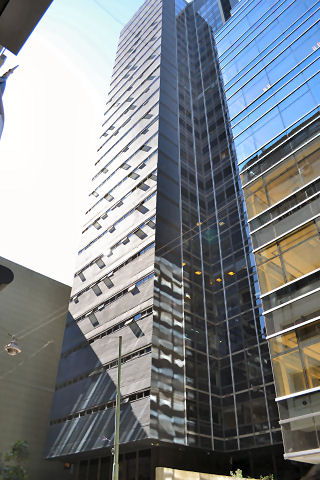
While I’m sure there’s some story behind this building, or its site, my only real point here is the sudden change of character to 25 de Mayo once past Tucumán and on down the remaining four blocks. New, nondescript office buildings and business hotels are pretty much the order of the day in this last stretch.
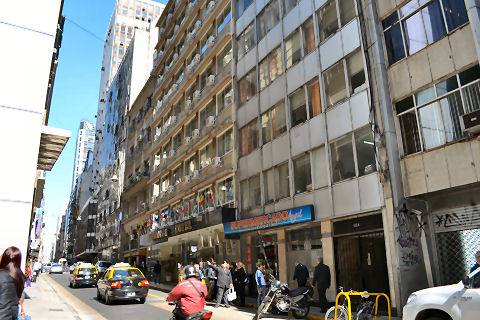
A look back along 25 de Mayo, with the Concorde Hotel at #630.
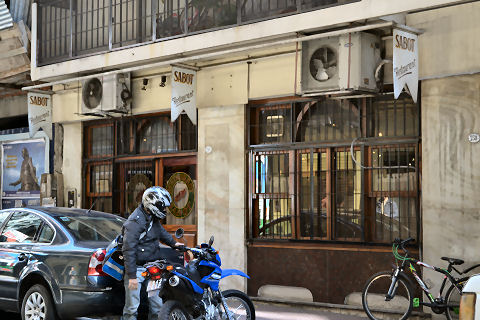
And, as good a place as any to end up our little walk, lunch at Sabot, at number 756, just before the street ends.
Your tours continue amazing Dan! All you’ve written about the Anglican Church (the Cathedral of St. John the Baptist) is spot on, including the important information that they seem always closed weekdays apart from a Wednesday evening prayer event, and that their website is woefully and eternally underdeveloped.
There was, I recall, some interesting information regarding the exterior plinth, but I think in the main you’ve captured what is likely to be of general interest! GFW+
[…] The steps are flanked by two buildings of note. To the right, the rear entrance of the Bunge y Born building, that I mentioned in my 25 de Mayo walk. […]